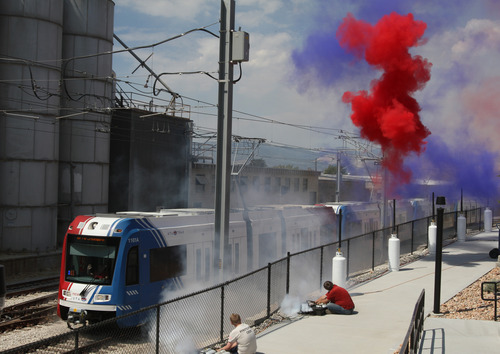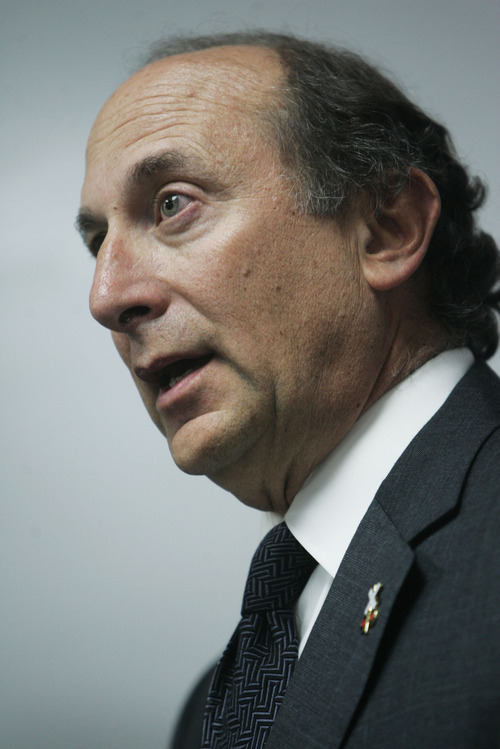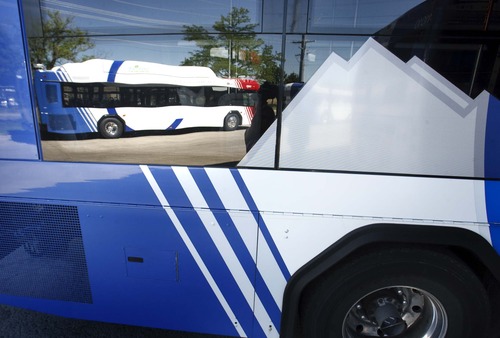This is an archived article that was published on sltrib.com in 2014, and information in the article may be outdated. It is provided only for personal research purposes and may not be reprinted.
Kaysville • In a daylong retreat Monday, the Utah Transit Agency board talked about how it would love to offer more frequent service, more extensive bus routes and more late-night and weekend schedules.
But all that would cost more money, which UTA doesn't have.
So the board made seeking more money — through a possible sales-tax hike, restructuring its fares and even some novel appeals to businesses and cities — a key topic as it worked on goals for coming years.
"We have enough money to run what we own. But the demand for more services [is] out there," UTA President, CEO and General Manager Michael Allegra told the board, which met at the Boondocks amusement park (where it even scheduled a lunchtime "team-building" activity of bowling).
Allegra said many transit agencies similar to UTA receive nearly twice as much in sales tax as UTA, allowing them to offer more frequent service.
They receive about 1 cent per $1 in sales tax for transit, while UTA receives 0.69 cents per $1 in Salt Lake County; 0.55 cents in Utah, Davis, Weber and Box Elder counties; and 0.3 cents in Tooele County.
The UTA has supported legislation that would hike current caps on transit sales tax to about a penny per $1, and allow voters to decide in local elections whether to raise taxes. A bill to do that died as the Legislature adjourned this year, in part because of controversy over high UTA salaries and bonuses.
The agency doubled spending on bonuses last year. Some executives received bonuses of up to $30,000 each. It helped Allegra, for example, receive total 2013 compensation of $346,249 — the bonus on top of $178,881 in wages, $49,677 for annual leave and $87,691 in benefits.
Allegra told the board Monday: "We don't have the ridership levels that our peers are achieving mostly because we're not operating that [higher] frequency of service" that others offer, saying UTA cannot afford it.
Allegra said in an interview that agencies in Denver and Portland, for example, generally "have the same number of vehicles as us. The big difference is they run them a lot more" and therefore have higher ridership.
"I am a strong believer that our investments in frequency of service" would bring a big "increase in ridership," he said.
John W. Martin, president and CEO of the Southeastern Institute of Research, suggested that the board seek support for increased taxes by working with business leaders, and stressing the economic development often attracted by transit projects.
Allegra said the new Sugar House streetcar, for example, attracted new development worth 10 times the cost of the project.
Allegra said he believes UTA has squeezed as much savings as possible from lowering overhead and improving efficiency. "When you look at our costs per mile … I believe we are running a tight ship," he said, adding UTA now needs to find additional money.
That involves more than just looking for a tax increase. He said it includes going to businesses and cities to help pay for services that benefit them.
UTA already does that to a point by persuading many businesses to subsidize passes for employees. He said that perhaps they could be approached to help pay for construction of new projects that would benefit them.
Allegra noted that the University of Utah donated land for TRAX and changed its land use to encourage use of transit. UTA "may not have received the money from that directly, but it received the benefit."
Ogden and Park City recently chipped in extra money to pay for ski and other bus service, and Allegra said that could be a model for others that want increased service.
UTA has also begun a study on restructuring its fares — which now provide about 23 percent of operating expenses.
It is looking at ceasing its 45-year-old practice of allowing riders to go anywhere on its bus and TRAX system for one flat fare, and instead charge fares based on how far passengers travel.
Andrea Packer, UTA chief communications officer, told the board that is among many options staff is looking at to be more fair to riders, and also find ways to maximize revenues without undercutting ridership.







